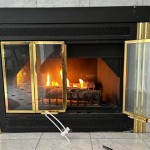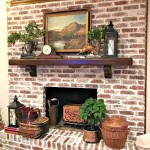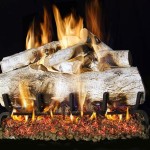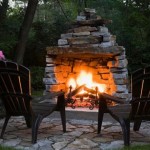Understanding Vent-Free LP Gas Fireplaces
Vent-free LP gas fireplaces offer a potentially convenient and efficient heating solution for homes. Unlike traditional fireplaces that require a chimney or venting system to expel combustion byproducts, vent-free models are designed to burn cleanly enough to be operated without external venting. This presents both advantages and disadvantages that prospective buyers must carefully consider.
LP gas, or liquefied petroleum gas, is a readily available and relatively clean-burning fuel source. When burned in a properly functioning vent-free fireplace, the primary byproducts are water vapor, carbon dioxide, and small amounts of other gases. The key to safe operation lies in the design and safety features of the appliance, as well as adherence to strict installation and operational guidelines.
The Mechanics of Vent-Free Operation
Vent-free LP gas fireplaces are engineered with sophisticated burner systems that aim for near-complete combustion. This minimizes the production of harmful byproducts, particularly carbon monoxide. Oxygen Depletion Sensors (ODS) are a crucial safety component. These sensors constantly monitor the oxygen levels in the room. If the oxygen level drops below a safe threshold, the ODS automatically shuts off the gas supply to the fireplace, preventing the buildup of dangerous carbon monoxide levels. This mechanism is vital for preventing asphyxiation in the event of inadequate ventilation or a malfunctioning burner.
Catalytic converters are often integrated into the design, further reducing emissions. These converters facilitate the oxidation of remaining unburned gases, transforming them into less harmful substances. The efficiency of these converters is essential for achieving the low emission levels required for vent-free certification.
The size of the fireplace is also a critical factor in its safe operation. Vent-free fireplaces are rated based on their BTU (British Thermal Unit) output, which determines the amount of heat they produce. It's crucial to select a fireplace that is appropriately sized for the room in which it will be used. An oversized fireplace can lead to overheating and potentially compromise the air quality within the space. Overheating could trick the ODS sensors and cause other issues.
Advantages of Vent-Free LP Gas Fireplaces
One of the most significant advantages of vent-free LP gas fireplaces is their ease of installation. Because they do not require a chimney or venting system, they can be installed in virtually any room of a home, provided that the room meets the minimum size and ventilation requirements. This flexibility makes them a popular choice for homeowners who want to add a fireplace to a room that lacks the infrastructure for a traditional fireplace. This also avoids the cost and mess associated with installing venting systems. Furthermore, their portability allows them to be moved fairly easily assuming a gas line is avaliable.
Another benefit is their energy efficiency. Since all the heat produced by the fireplace is released directly into the room, there is no heat loss through a chimney or vent. This can result in significant energy savings compared to traditional fireplaces, which can lose a substantial portion of their heat up the chimney. The savings can be seen in the reduced usage of the primary heating source such as a furnace or heatpump.
Vent-free fireplaces also offer aesthetic appeal. They are available in a wide range of styles and designs, from traditional to contemporary, allowing homeowners to choose a model that complements their décor. Many models feature realistic-looking flames and logs, creating the ambiance of a traditional fireplace without the need for wood or the hassle of cleaning up ashes. The ability to have a fireplace without the traditional mess and hassle is a huge draw for many consumers.
Key Considerations and Safety Precautions
Despite their advantages, vent-free LP gas fireplaces require meticulous attention to safety and adherence to manufacturer guidelines. Adequate ventilation is paramount. While these fireplaces are designed to burn cleanly, they still produce combustion byproducts, including carbon dioxide and water vapor. Insufficient ventilation can lead to a buildup of these gases, potentially causing health problems or triggering the ODS to shut off the fireplace frequently.
Regular maintenance is essential. The burner system should be inspected and cleaned periodically to ensure proper combustion and prevent the buildup of dust or debris that could interfere with its operation. The ODS should also be tested regularly to verify that it is functioning correctly. A certified technician should perform these inspections and any necessary repairs to guarantee the safe and reliable operation of the fireplace.
Carbon monoxide detectors are a mandatory safety precaution. These detectors provide an early warning of potentially dangerous carbon monoxide levels in the home. They should be installed in accordance with the manufacturer's instructions and tested regularly to ensure they are functioning properly. It is recommended to have multiple detectors, placed near sleeping areas and on each level of the home. The alarm should be equipped with a battery backup in case of a power outage.
Furthermore, it is crucial to understand and comply with local building codes and regulations regarding the installation and use of vent-free LP gas fireplaces. Some jurisdictions may have restrictions on their use, particularly in bedrooms or bathrooms. Consulting with a qualified building inspector or HVAC professional can help ensure that the installation meets all applicable requirements.
Selecting a fireplace certified by a recognized testing agency, such as the American Gas Association (AGA) or Underwriters Laboratories (UL), provides an assurance that the appliance meets stringent safety and performance standards. Certified fireplaces undergo rigorous testing to ensure they operate safely and efficiently, minimizing the risk of carbon monoxide emissions and other potential hazards. Avoid cheaper, uncertified units due to the risk.

Radiance Vent Free Gas Stove The Place
:max_bytes(150000):strip_icc()/ventless-gas-fireplaces-4160746-hero-f9d4bdcd9bd446eb84406de306f790ba.jpg?strip=all)
How To Pick Out A Ventless Gas Fireplace

Vent Free Inserts White Mountain Hearth

Ventless Gas Fireplace Propane

Duluth Forge 22 In W Vent Free Propane Gas Fireplace Log Set Winter Oak 32 000 Btu Thermostat Control Dls L22t The Home Depot

Ventless Gas Fireplace Vent Free Modern

Vermont Castings Star Vent Free Gas Stove Inseason Fireplaces Stoves Grills Rochester Ny

Pleasant Hearth 27 500 Btu 42 In Convertible Ventless Propane Gas Fireplace Heritage Vff Ph26lp 2h2 The Home Depot

Empire Vfpa36bp31lp 36 In Vail Millivolt Vent Free Premium Fireplace With Blower Lp Gas Com

One6 Vf SÓlas Contemporary Fireplaces
Related Posts








